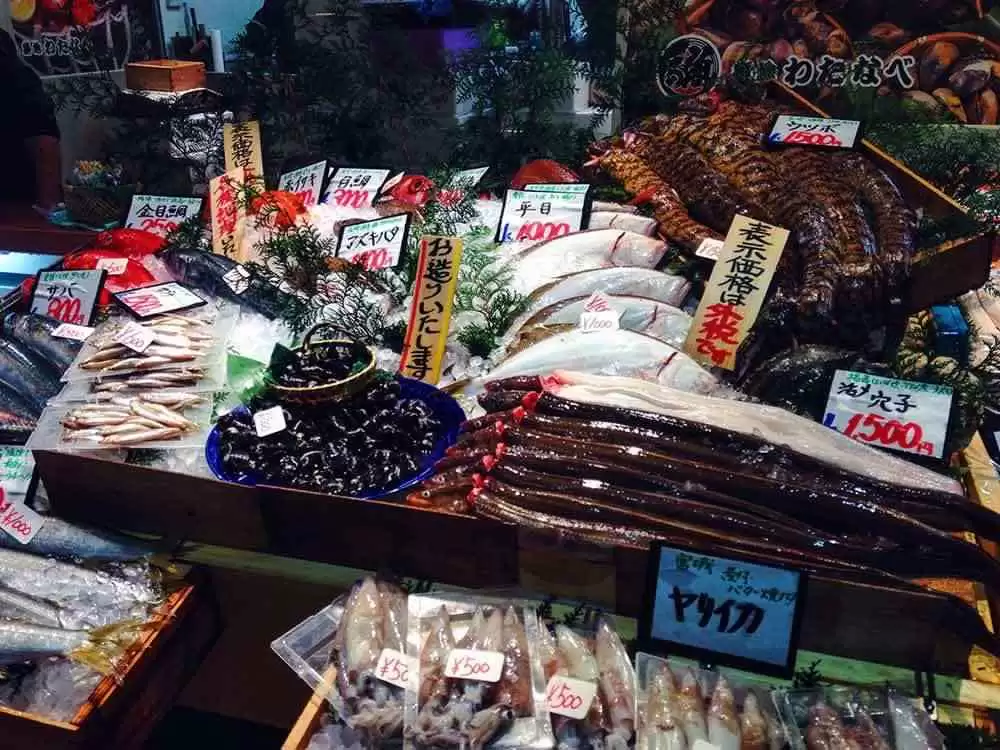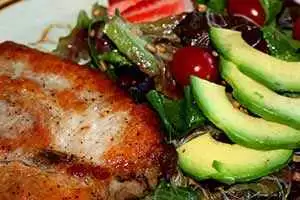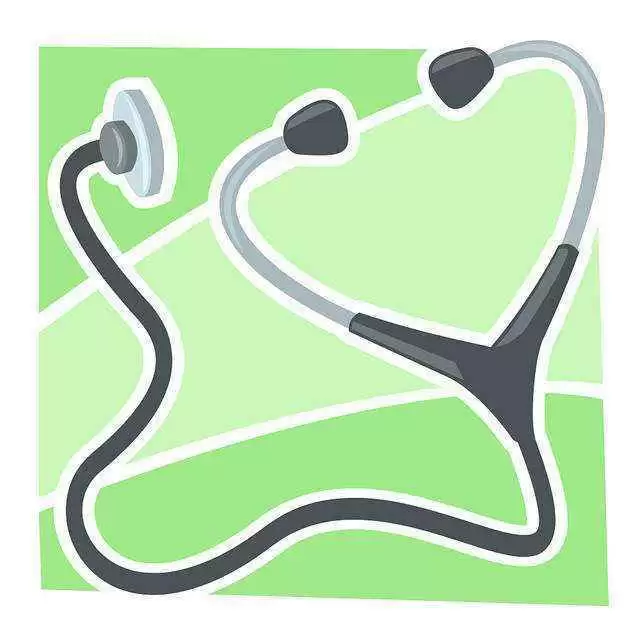
Celiac.com 04/11/2019 - Dieting, a word commonly used by people who are in the process of consuming food in a regulated and monitored manner. We normally equate someone who is dieting to someone who wants to lose weight and restricts their food intake to achieve a desired outcome, for example to prevent certain diseases or deal with obesity.
For many reasons, the purpose of dieting has evolved. Currently there are many popular diet plans available, such as the gluten-free diet, keto diet, paleo diet and detox diet. But today we are only going to discuss the difference between two more widely used diets, which are the gluten-free and keto diets.
What is a gluten-free diet?
Celiac.com Sponsor (A12):
A gluten-free diet is generally a diet that explicitly excludes gluten from meals. This diet is normally used to treat people with celiac disease, or those who have gluten sensitivity and experience discomfort and symptoms after consuming gluten.
Gluten is found in many foods that we consume today. It is found in wheat and other grains such as oats, rye and barley. Gluten has a glue-like property when mixed with water. For example, the gluten found in wheat bread flour helps create a sticky network that allows bread to rise and gives it a chewy texture. Unfortunately gluten is used very widely in various food additives and ingredients, which makes it difficult to avoid.
What is a keto diet?
A keto diet focuses on consuming only high-fat, moderate-protein and low-carbohydrate foods. It involves a substantial reduction of carbohydrate intake which is replaced with fat.
The purpose of the keto diet is to put your body into a metabolic state known as “ketosis.” What happens in this process is that your body will start efficiently burning fat for fuel instead of carbohydrates.
What should we avoid in a gluten-free diet
Gluten is widely used during food production making it difficult at times to maintain a gluten-free diet. Although gluten is safe to be consume by many people, those with gluten sensitivity should avoid it to prevent complications.
Below are some basic foods that contain gluten, and some examples that may contain gluten (see Celiac.com's Forbidden List for more info):
- Baked goods - Cookies, muffins, cakes, pizzas, etc.
- Bread - All wheat-based bread.
- Pasta - All wheat-based pasta.
- Snack foods - Pre-packaged chips, roasted nuts, candy, pretzels, crackers, etc.
- Beverages - Flavored alcoholic drinks or beer.
- Cereals - Unless stated gluten-free.
- Other foods - Sauces, couscous, broth cubes.
What can we eat on a gluten-free diet?
However, even with limited food choices, there are many gluten-free options now available in markets. It isn’t that hard to adopt this diet as long as you keep an eye out for foods labeled with “gluten-free” or better yet, you can prepare home-cooked meals which will definitely be healthier.
Below are foods that are naturally gluten-free:
- Fruits and vegetables - All types of fruits and vegetables are naturally gluten-free so eat away!
- Meats and fish - Avoid battered or coated meats or fish.
- Dairy - Products such as plain milk, plain yoghurt and plain cheese are gluten-free as long as it does not contain added ingredients.
- Grain - Rice, buckwheat, quinoa, corn, oats and tapioca, as long as labeled gluten-free.
- Starches and flour - Potatoes, corn, chickpea flour, potato flour, corn flour, soy flour, tapioca flour and coconut flour.
- Nuts and seeds
- Herbs and spices
- Spreads and oils - All butter and vegetable oils (some celiacs avoid canola oil as it's often grown in the same fields as wheat).
Foods to avoid on a keto diet
This diet restricts a substantial amount of carbohydrates in your body to ensure that only fats will be burned. Therefore, any type of food with a high carbohydrate content should be limited.
Here is a list of high-carb foods that should be limited:
- Grains and starches – Pasta, rice, cereals, wheat-based products,etc .
- Sugary foods – Cake, candy, ice cream, fruit juice, etc .
- Fruits – All kinds of fruits (except limited portions of berries).
- Beans and legumes – Chickpeas, kidney beans, lentils, peas ,etc.
- Root vegetables and tubers – Carrots, sweet potatoes, potatoes, etc.
- Alcohol – Due to alcohol carb content, many alcoholic beverages are not recommended.
- Sugar-free diet foods – These food are often high in sugar alcohol and tend to be highly processed.
What can we eat on a keto diet?
As your body will only be focused to burn fats as fuel, you will require a substantial amount of fatty food. However, this does not mean to consume all the fried food you can find. In a high fat diet, you have to focus on consuming only healthy fat to still achieve your required nutrients.
Your meals should be based around these foods:
- Fatty fish – Salmon, tuna, trout and mackerel.
- Meat – Chicken, steak, turkey, ham, sausages and bacon.
- Eggs – Opt for pastured or omega-3 whole eggs.
- Low carbohydrate veggies – Most green leaf veggies, tomatoes, onions, etc.
- Cheese – Unprocessed (goat, cheddar, cream, mozzarella or blue cheese).
- Butter and cream – Opt for grass fed.
- Healthy oils – Mainly extra virgin oil, avocado oil and coconut oil.
- Condiments – Salt, pepper or any herbs and spices.
Benefits of gluten-free diet
Obviously those who have celiac disease require a gluten-free diet, but even for those who don't a low-gluten diet can be beneficial. Excess consumption of gluten may lead to gut or other inflammation, which can result in bloating, stomach cramps or diarrhoea.
Therefore, a gluten-free diet can be beneficial to anyone facing digestive problems such as bloating constipation and many other symptoms. It can help ease your digestive symptoms and reboot your digestive tract.
Moreover, dropping gluten allows you to have more energy during your day. Eating an anti-inflammatory diet removes food stressors like gluten, sugary food and genetically modified food that will allow your body adrenals to come be reduced. This improves energy, reduces stress, and can aid one's emotional balance.
Benefits of the keto diet
Although it may sound scary to focus on consuming a high amount of fatty foods, and it may even seem to be in conflict with your health goals, it is actually beneficial in many ways.
Burning only fats can help you drop a lot of weight quickly. This is because ketones suppress your hunger hormones which in return reduces your appetite. You will be able to go for longer periods without eating.
Next, a keto diet fuels and feeds your brain. As our brain is made up of at least 60% fat, and ketones provide an instant hit of energy whenever you're burning fat. Consumption of essential fatty acids will also help to grow and develop your brain.
Possible negative effects of gluten-free and keto diets
As with all good things, there are sometimes bad things that come with them. Despite having a variety of health benefits, there are certain risks associated with both diets.
First, you may be at risk of nutrient deficiency due to the elimination of too many foods. This can cause you, for example, to not consume enough fiber from traditional sources. Fiber also assists your body in the absorption of nutrients.
Furthermore, the lack of fiber can lead you to have bowel issues such as constipation. Gluten-free and keto diets both eliminate many sources of fibre like wheat bran and fruits that promote good bowel movements. Constipation can cause serious issues if not dealt with.
Conclusion
Those with celiac disease or gluten sensitivity require a gluten-free diet, and don't have the luxury going off the diet—they must stay on the diet to maintain their health. It is always a good idea to consult a registered dietician before starting any major dietary change, and this is true for both the gluten-free and keto diets. Interestingly the keto diet is mostly gluten-free, or can easily be made gluten-free, so for celiacs who want or need to lose weight, it might be a good option.










Recommended Comments
Create an account or sign in to comment
You need to be a member in order to leave a comment
Create an account
Sign up for a new account in our community. It's easy!
Register a new accountSign in
Already have an account? Sign in here.
Sign In Now